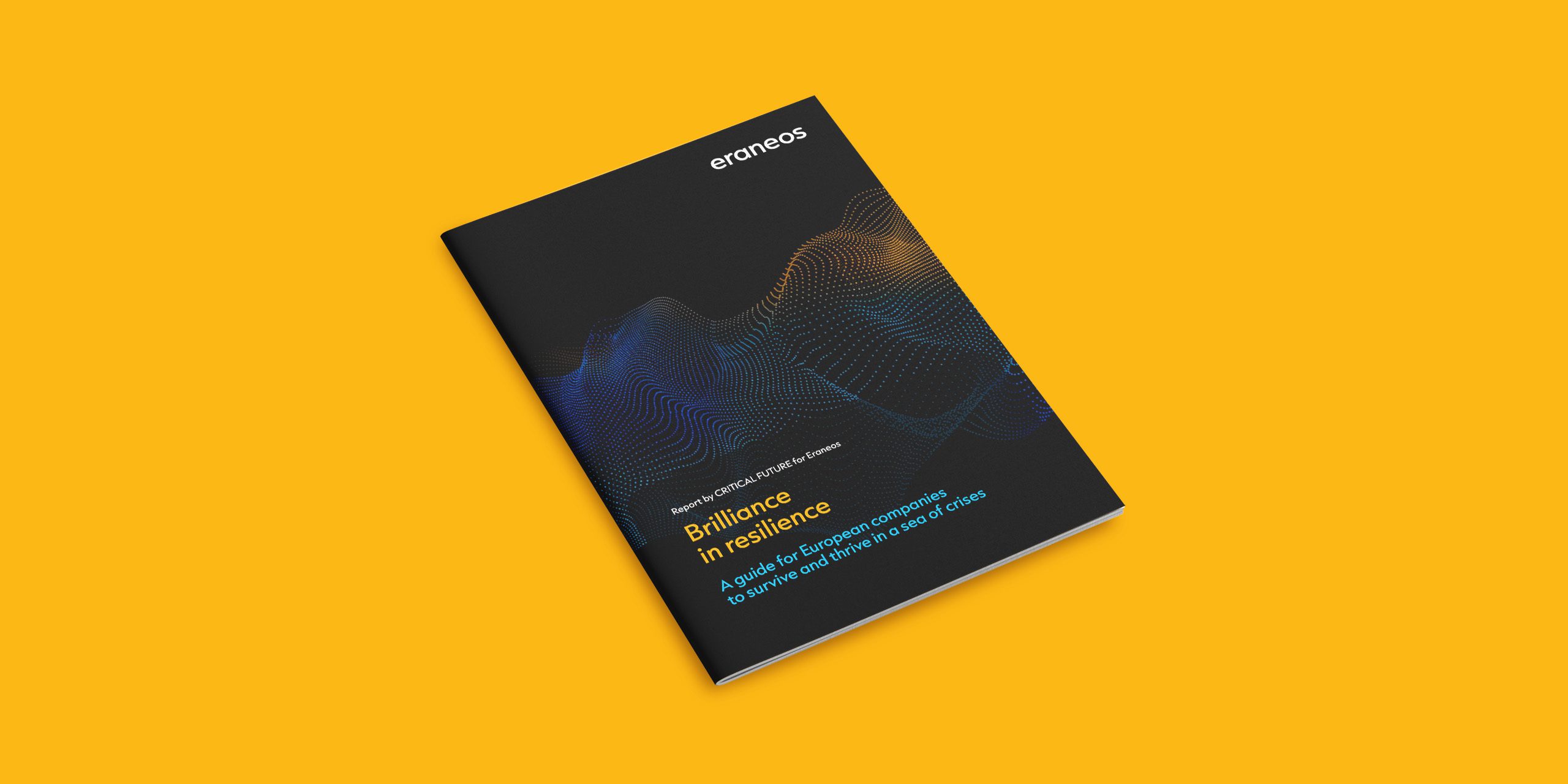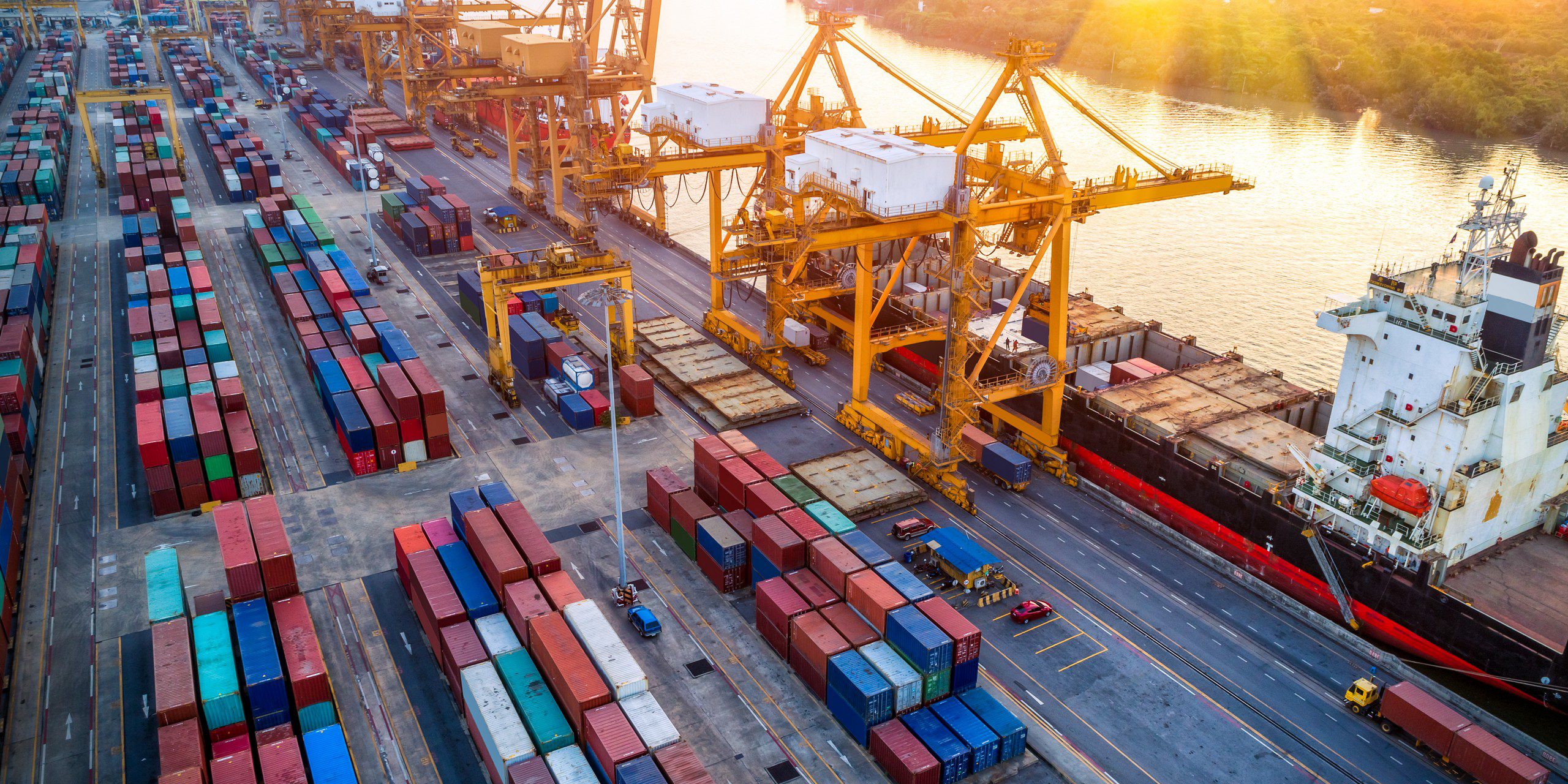Following the crisis of the Covid-19 pandemic, the global transportation and logistics sector was still only in its recovery stage when war broke out in the Ukraine and made an already tenuous situation across Europe worse. From breakdowns in logistics, to material shortages, and a tight talent market, the supply chain space is now facing several disturbances, with one unavoidably aggravating the other.
Eraneos, together with Critical Future, London, has focused on the five greatest disruptive factors within the transportation and logistics sector:
Disruption 1: Port congestion
Port congestion leads to full terminals where container ships are unable to load or unload their cargo. This necessitates queues and additional wait times, resulting in delays. In fact, data from Statista reveals that the average container ship delay has reached eight days in 2022, up from just four days in 2018 (Source Brilliance in resilience – A guide for European companies to survive and thrive in a sea of crises | Eraneos – Switzerland).
In addition, China’s recent lockdowns, as well as Russia-bound stranded containers, have compounded the issue and led global port congestion to near peak levels in 2022. This is causing new record wait times, leading to severe import and export bottlenecks and delays.
Disruption 2: Container shortages
Sea cargo remains stuck in ports or in storage, and is unable to move, due to container shortages. An uneven distribution of cargo containers resulted over the last couple of years, causing higher container prices. Combined with port congestion, this sees major price increases in ocean freight, as the HARPEX index confirms, where shipping rates this year have reached almost 10 times their level of just two years ago (Source Brilliance in resilience – A guide for European companies to survive and thrive in a sea of crises | Eraneos – Switzerland).
Disruption 3: Soaring fuel prices
The recent geopolitical developments in Europe have resulted in an abrupt cessation of energy from Russia, driving fuel prices to new peaks in the transport and logistics sector.
Disruption 4: Labor shortages
At the beginning of 2022, the International Chamber of Shipping reported that 14.5 percent of the world’s shipping personnel were comprised of Russian and Ukrainian seafarers (Source Brilliance in resilience – A guide for European companies to survive and thrive in a sea of crises | Eraneos – Switzerland).
But even before the conflict erupted, the labor shortage was apparent. In 2021, the International Road Transport Union (IRU) reported that Europe would be short of nearly half a million truck drivers – about 10 percent of the total available driver workforce in the region (Source Brilliance in resilience – A guide for European companies to survive and thrive in a sea of crises | Eraneos – Switzerland).
The IRU projected an increase to 14 percent by the end of 2022. The labor shortage extends not only to drivers, but also to warehouse and port workers.
Disruption 5: Routing constraints
Routing constraints are due to several external factors affecting commercial transportation and delivery, from poor weather conditions to.
How do companies in the transport and logistics sector counter these disruptive factors? They develop organizational resilience.
One of the CEOs we interviewed confirmed this:
In the early months of 2022, we started to move cargo from ship to train. In February, the trains that go through Russia got stuck for four weeks and our cargo was stranded. It is important to think about the extreme possibilities of what would happen and how we can live with that as a company.
Our guide “Brilliance in resilience – A guide for European companies to survive and thrive in a sea of crises | Eraneos – Switzerland” shows how to use organizational resilience, develop more accurate forecasts considering these disruptors, and how to plan for alternative solutions.








